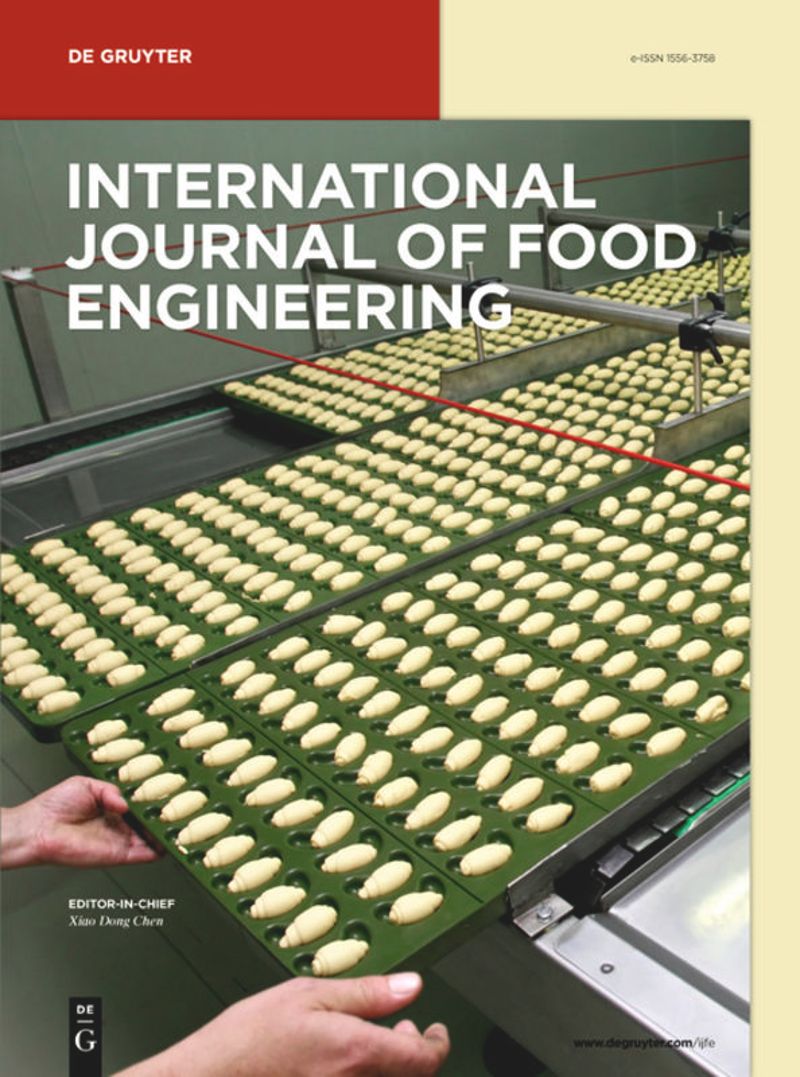用界面流变学方法测定菊粉与不同蛋白质的最佳相互作用:与乳液活性和稳定性的关系
IF 1.4
4区 农林科学
引用次数: 0
摘要
摘要本研究旨在制备含膳食纤维/蛋白质的功能性乳剂,并研究界面流变性能对乳剂稳定性的影响。以菊粉和多种动植物蛋白为原料制备了乳状液,并对其乳化和界面流变性能进行了评价,探讨了其在稳定水包油乳状液中的应用前景。界面测量包括频率、时间和菌株扫描测试,根据蛋白质的差异来确定。结果表明,蛋白质在两个界面上的吸附行为有很大的不同。乳状液的表观粘度(η50)在0.006 ~ 0.037 Pa s之间。低剪切速率下,蛋蛋白-菊粉混合物在油水界面处的界面粘度(ηi)值最高。特别是,鸡蛋蛋白的界面特性与其他蛋白质不同。该研究表明,菊粉的存在会影响蛋白质的界面流变性能和乳化性,这有助于现有的用蛋白质制备益生元乳剂的知识体系。本文章由计算机程序翻译,如有差异,请以英文原文为准。
Determination of the best interaction of inulin with different proteins by using interfacial rheology: the relationship with the emulsion activity and stability in emulsion systems
Abstract This study aimed to develop functional emulsions with dietary fibre/proteins and to examine the role of interfacial rheological properties on the emulsion stability. Emulsions with inulin and various animal/vegetable proteins were prepared, and their emulsifying and interfacial rheological properties were appraised for their possible applications in stabilizing oil-in-water emulsions. Interfacial measurements including the frequency, time and strain sweep test were determined depending on the protein differences. The results revealed that the adsorption behaviour of proteins at the two interfaces was quite different. The apparent viscosity (η50) of the emulsions ranged between 0.006 and 0.037 Pa s. The highest interfacial viscosity (ηi) values at low shear rates were determined in the mixture of egg protein-inulin at the oil/water interface. In particular, the interfacial properties of egg protein were not similar to those of other proteins. This study indicated that interfacial rheological properties and emulsifying properties of the proteins were influenced by the presence of inulin which contributes to the existing body of knowledge on the preparation of the prebiotic emulsions with proteins.
求助全文
通过发布文献求助,成功后即可免费获取论文全文。
去求助
来源期刊
CiteScore
3.20
自引率
0.00%
发文量
52
审稿时长
3.8 months
期刊介绍:
International Journal of Food Engineering is devoted to engineering disciplines related to processing foods. The areas of interest include heat, mass transfer and fluid flow in food processing; food microstructure development and characterization; application of artificial intelligence in food engineering research and in industry; food biotechnology; and mathematical modeling and software development for food processing purposes. Authors and editors come from top engineering programs around the world: the U.S., Canada, the U.K., and Western Europe, but also South America, Asia, Africa, and the Middle East.

 求助内容:
求助内容: 应助结果提醒方式:
应助结果提醒方式:


